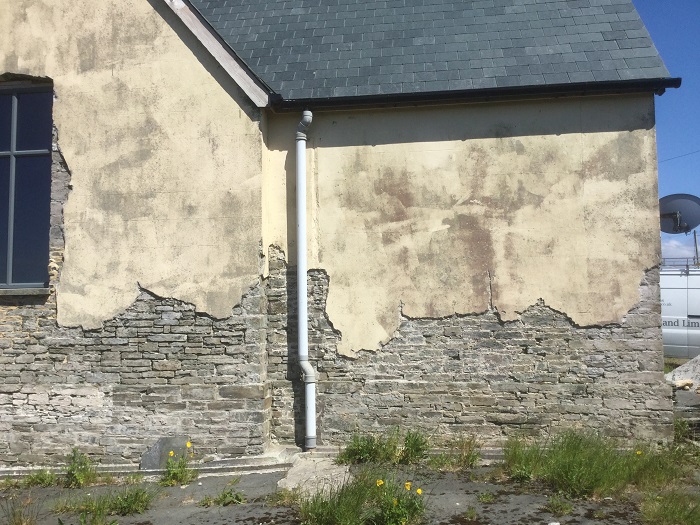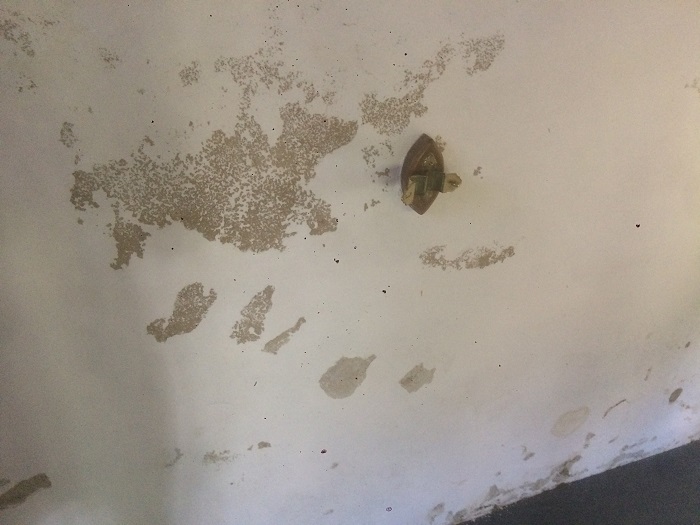Damp
**Please read this page carefully. Leslie Cornell Building Restoration Ltd do not advise, supply or install Modern Damp Proofing Materials or Techniques**
We are contacted by Clients who have been informed by ‘Qualified Surveyors’ and Damp Proofing Specialists in Cornwall that damp proofing their property is required, but in order to limit damp in old walls in Cornwall you need to understand the materials from which your building has been constructed. This understanding and knowledge is key to maintaining a damp free environment and this is where Leslie Cornell Building Restoration Ltd can help you.
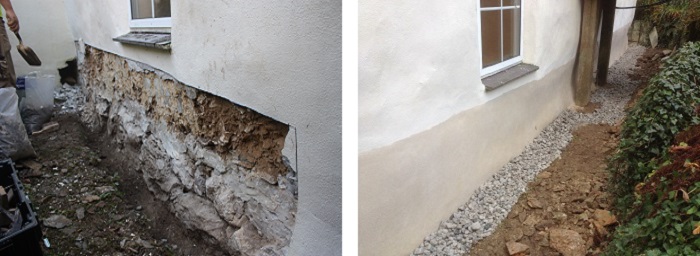
Identifying the cause of any damp is the first step to addressing the problem, followed by the appropriate methods for damp limitation.
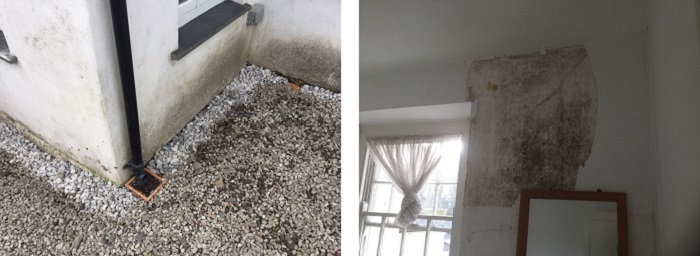
There are many different damp proofing systems used in the construction industry and can, where inappropriately applied, cause more harm than good.
Some examples of these damp proofing systems and the reasons they are not always appropriate for use in old buildings in Cornwall are:
- Tanking (either in sheet or slurry form) – These systems used to ‘damp proof’ old walls in Cornwall are designed to seal the surfaces to prevent damp penetrating the wall. This method can trap moisture behind the coating, thus forcing it to move and cause problems elsewhere.
- Injection damp proof course – Chemicals are injected into holes that have been drilled into the mortar joints of the wall or brickwork (traditional and modern), so it can penetrate the masonry to provide a water repellent barrier. The materials used in these systems are non-breathable and will restrict the natural movement of moisture, resulting in the build-up of moisture which will cause even damper areas elsewhere.
Old walls in Cornwall were constructed using Cob, stone or brick, and need to be maintained using breathable materials.

There are many damp limitation measures that we implement to manage the moisture content within a wall and they have a very effective and positive outcome for limiting damp problems, negating the need for installing damp proofing systems in Cornwall. For more information, please see our Damp Limitations page.
For further information about Damp in Old Buildings and Walls, please have a look at the links below:
Society for the Protection of Ancient Buildings
Before spending money on damp proofing systems in Cornwall, please Contact Us for some professional and friendly advice on your project.
For more information about the terminology used within this website, please have a look at our Glossary.
If you have any questions about Historic Building Restoration in Cornwall, please visit our FAQ page.
Damp Proofing Cornwall – Damp in Old Buildings Cornwall – Damp Contractors Cornwall
Here, at Leslie Cornell Building Restoration Ltd, we provide free advice and affordable solutions for anyone experiencing damp walls in their old or historic building in Cornwall and Isles of Scilly.
The most common causes of damp in solid wall construction are:
- Inefficient guttering, downpipes and/or facia boards
- Ineffective roofing components
- Impermeable applications (e.g. cementitious products, Gypsum coatings and synthetic paints)
- External ground level/s in immediate contact with the wall/s
- Inappropriate or non-existent external drainage
- Vegetation and/or climbing plants/shrubs
- Inefficient/non-existent weather flashing/s

Excessive moisture levels within solid wall construction, i.e. cob, stone, brick, are generally caused by an impermeable cladding. Hard, impervious cementitious applications work very effectively on the same or similar backgrounds, however, these applications on substrates such as cob, old stone or brick, straw bale and/or wooden laths will almost certainly fail.
There are numerous inappropriate contemporary damp-proofing systems* available and when used on a solid wall construction, issues concerning damp are inevitable.
*For basements and walls in direct contact with natural geology we would recommend Newton 500 System. For more information on this [reversible] installation click here.
If you have Damp walls in Cornwall and Isles of Scilly and would like to discuss your project, please Contact Us.
For more information about the terminology used within this website, please have a look at our Glossary.
If you have any questions about Historic Building Restoration in Cornwall, please visit our FAQ page.
Damp Walls in Old Buildings Specialist Cornwall & Isles of Scilly / Damp Problems in Solid Wall Construction Cornwall & Isles of Scilly / Damp Limitation Advice Cornwall & Isles of Scilly
Total eradication of damp in old buildings in Cornwall is virtually impossible to achieve.
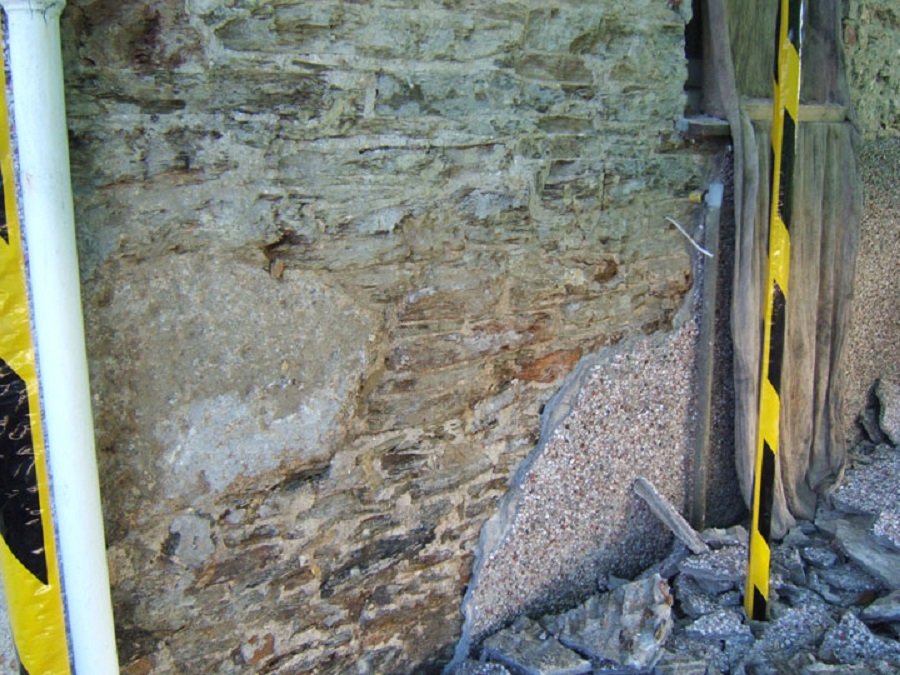
However, significantly reducing the levels of damp can be achieved by adopting some or preferably all of the procedures described below.
All buildings/walls are different and the extent and presence of damp varies, however in our experience, here in Cornwall, these methods have proven successful in damp limitation.
- Cut-back or remove all vegetation in close proximity to the wall. Climbing ivy should be severed at the root base and left to die-off naturally. Removal of living ivy from the wall, especially if water penetration to the substrate has occurred, can result in unnecessary damage to the cob and/or stonework.
- Remove all existing impermeable applications, for example, current renders, cement based plasters and cement pointing. It is recommended that this should be done using hand tools, not machinery, only so as to not damage and/or disturb the substrate.
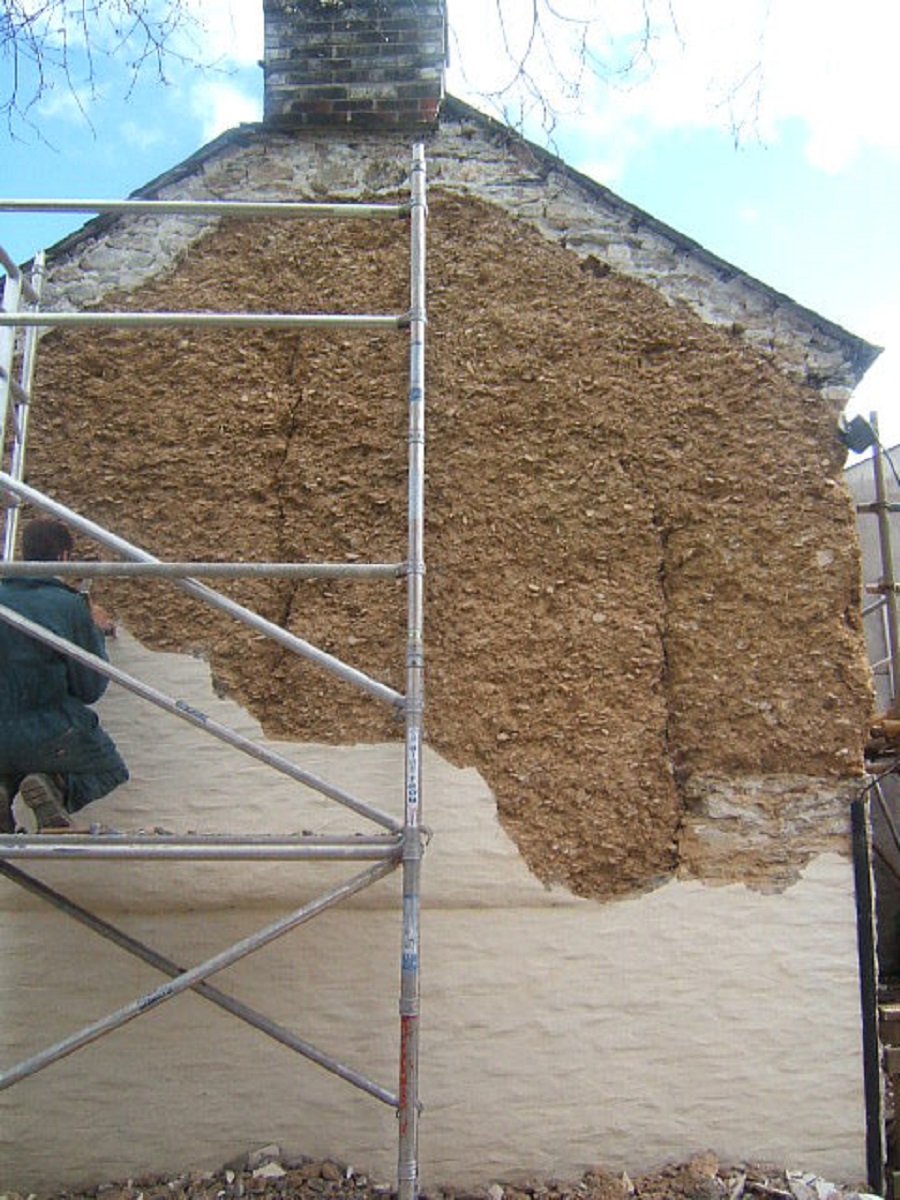
- The installation of land drains at the base of all external walls has three main functions. Firstly, rainwater run-off from the wall itself will naturally find its way down to the drainage trench. Secondly, all rainwater from the roof, via gutters and gulleys, will go into the drainage pipe. And finally, any water at ground level will find its way into the trench before reaching the base of the wall. Capillary movement of water to the wall base would be negligible. All land drain pipes should run to a suitably distanced soak away area.
- With the substrate now exposed, whether cob and stone, stonework or old brick, the re-introduction of a cladding is not always desired. An exposed cob wall for example, assuming all of these procedures are followed, will last another 200 years. If a protective cladding and/or pointing is required then a lime application must be used.
- Broken, slipped or missing roof slate/tiles must be replaced, especially over the wall head. Hip and half-hip ridge tiles (where applicable) must be secure and watertight. If hip tiles are not used then the appropriate fish-tail flashings must be in good weather proof condition.
- Guttering and facia boards must be in good condition with no leaks and have a suitable fall toward the running outlets. Downpipes should be leak-free and secure. All downpipes should fit directly into the gulleys and flow into the land drain.
- When cob buildings were first occupied by dwellers there was a constant heat source from one or more open fires. Boiling water, cooking, baking etc. took place all day, every day. This relatively high internal ambient temperature and the thickness of the walls, as well as thatch, made for an almost damp-free existence. Adopting these ways today is impractical, and time consuming. Modern living allows little time and lots of restriction on such practices. However, the installation of under floor heating, preferably with a sustainable power source, has proven to be beneficial in the reduction of damp. Correctly installed and carefully regulated, this is an efficient and cost effective addition to most old buildings.
We fully understand that undertaking all of these procedures is not always possible. Practicably, property boundaries, the lay of surrounding land and cost may prevent some or all of these procedures being executed in full, however with a full understanding, care and the use of appropriate materials damp limitation can still be achieved.
If you have damp problems in Cornwall and would like advice to limit and prevent damp ingression in Cornwall please Contact Us.
For more information about the terminology used within this website, please have a look at our Glossary.
If you have any questions about Historic Building Restoration in Cornwall, please visit our FAQ page.
Limiting Damp Cornwall – Damp Wall Problem Cornwall – Old Damp walls in Cornwall

